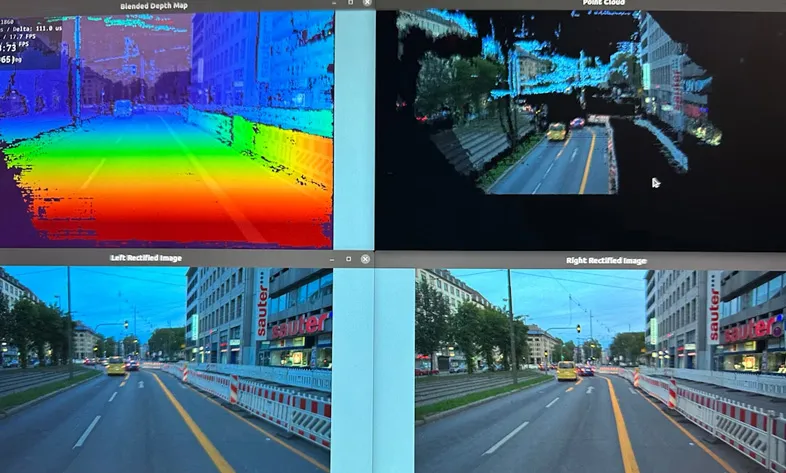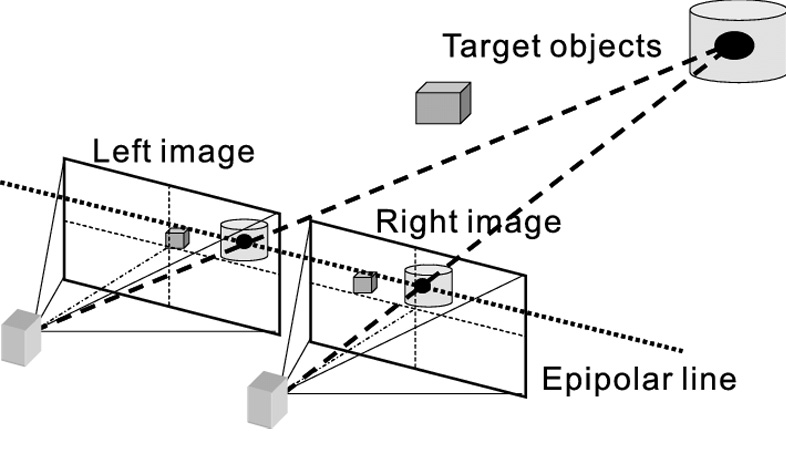What is Stereo Vision?
What is Stereo Vision and what are its applications? Principles, technologies, uses, and challenges in computer vision and artificial intelligence.
If you have any questions, ask!

What is Stereo Vision and what are its applications? Principles, technologies, uses, and challenges in computer vision and artificial intelligence.
Stereo vision is one of the exciting technologies in the field of computer vision that enables systems to perceive depth and distance between objects.
This technology allows us to observe the three-dimensional world more accurately than ever and gives intelligent systems the ability to analyze their environment similarly to human eyes.
Using stereo vision, machines can detect objects in 3D space, measure distances, and make intelligent decisions in various industries such as robotics, smart vehicles, and medical applications.
This capability makes stereo vision more than a simple image processing algorithm and a vital tool in artificial intelligence.
In this article, we explore the principles of stereo vision, the technologies used, its applications, challenges, and future developments, showing how stereo vision is transforming the world of computer vision and AI.
Stereo vision is a fundamental concept in computer vision that allows the detection of depth and distance between objects.
It is based on the functioning of human eyes, where two eyes view images from different angles and the brain combines them to perceive depth.
The principles of stereo vision rely on matching corresponding points between two images. By identifying these points, distance and depth can be calculated, creating accurate 3D data.
This capability allows systems to better analyze their surroundings and make intelligent decisions.
Stereo vision is highly important in computer vision because without it, many intelligent systems cannot accurately understand and interact with their environment.
This technology is foundational for robotics, autonomous vehicles, augmented reality, and advanced medical applications.
Stereo vision uses two cameras or sensors that capture images simultaneously from different angles to create a 3D representation.
These images are combined using image processing algorithms to calculate object depth and distance.
Well-known algorithms like Block Matching and Semi-Global Matching are used to match corresponding points between two images, identifying differences and creating an accurate depth map.
In addition to algorithms, specialized lenses and advanced hardware increase the accuracy and quality of stereo vision.
This combination of hardware and software enables realistic 3D images and broad applications across various industries.
In medicine, stereo vision has numerous applications, including measuring distances between body parts during surgery, diagnosing eye diseases, and analyzing medical images for precise prediction and treatment.
This technology improves accuracy and safety in medical procedures.
In the automotive industry, stereo vision is used to develop intelligent driving systems and autonomous vehicles. It allows vehicles to detect objects, road lines, and obstacles and make safe decisions. Automated parking systems also benefit from this technology.
In robotics, stereo vision enables robots to understand their environment and perform complex tasks such as search and rescue, smart agriculture, and automated delivery services.
This technology significantly enhances robotic performance.

One of the main challenges in stereo vision is the accuracy of depth and distance measurements. Noise in images or lighting variations can lead to errors.
Advanced algorithms and artificial intelligence help address these issues.
Another challenge is matching corresponding points between images. Shadows, different lighting conditions, or hidden objects can cause mismatches.
Using deep learning algorithms and neural networks improves matching accuracy.
Processing time and cost are also significant challenges. Creating high-resolution depth maps requires complex calculations and powerful hardware. Researchers are developing optimized algorithms to reduce processing time.
With the advancement of AI and increased computational power, the future of stereo vision looks promising.
This technology will become faster and more precise in industries like robotics, smart vehicles, and healthcare, enhancing prediction and environmental analysis.
The combination of stereo vision with deep neural networks and machine learning improves image recognition and analysis, enabling intelligent systems to perform complex visual tasks.
In the future, stereo vision is expected to become a key tool in AI and computer vision, finding broader applications across industries and enabling innovative real-world solutions.
What is the difference between stereo vision and monocular vision?
Stereo vision uses two different viewpoints to calculate depth, while monocular vision is limited to data from a single camera and is less accurate.
Is stereo vision used in autonomous vehicles?
Yes, stereo vision helps vehicles detect objects and obstacles, measure distances, and make safe driving decisions.
Is stereo vision computationally intensive?
Yes, creating depth maps is complex and requires powerful hardware, but optimized algorithms and parallel processing can reduce computation time.
What is the application of stereo vision in robotics?
Robots use stereo vision to analyze their environment and perform complex tasks like search and rescue, smart agriculture, and automated services.
Can stereo vision replace humans?
No, it is an assistive technology for intelligent decision-making, and human supervision and control are still necessary.
Source » itroz Academy


Follow the guide to set up your domain email on any device or OS, including both smartphones and computers, quickly and easily.

This guide is useful for automatically forwarding your website emails set up on your domain to other email accounts, such as Gmail and others.

Step-by-step guide to install Thunderbird on macOS; download, setup, and manage multiple email accounts easily and efficiently.
Comments (0)